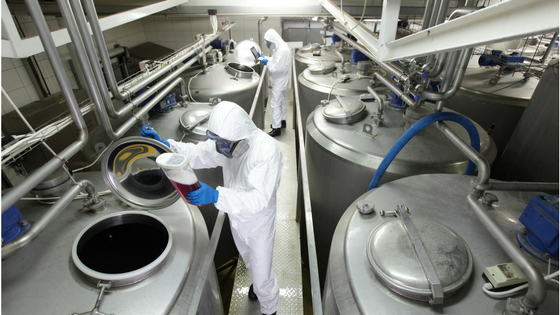Earlier this year, a major consumer products manufacturer experienced some backlash after its televisions were found to contain illegal chemicals within its structural components.
The chemical, DecaBDE, is a chemical flame retardant. It was phased out of manufacture in 2013 in the United States through a voluntary agreement with the EPA. It’s still available to manufacturers in China, which makes it possible to find its way into products consumed in the U.S.
This isn’t the first time something like this has happened in the manufacturing world.
In the mid-2000’s, toy manufacturers experienced a similar problem. Companies like Mattel, RC2, and others lost millions of dollars after issuing huge product recalls. The toys illegally contained lead paint.
Manufacturers must comply with chemical substance restrictions. The U.S. Federal Consumer Product Safety Commission (CPSC) is one of the big players in this game. In recent years, they’ve started to come down hard on manufacturers. The CPSC continues to implement new regulations, ban additional substances, and require expensive testing.
Manufacturers can avoid problems with the CPSC by defining, controlling, and properly managing their supply chains.
Components and materials of construction are often determined by the supplier. But when manufacturers submit an order, they can specify exactly what they want and need. Which they should, if they want to ensure compliance.
In the case with the televisions, the problem was the use of flame retardants. Which can be particularly challenging for manufacturers of electronic products.
Many of the components in electronic products are made from plastics. Plastics are flammable. And they’re often positioned in locations that could be subjected to excessive heat levels.
The International Electrotechnical Commission (IEC) requires televisions and other IT products to meet guidelines that reduce the risk of flammability in its plastic components.
Manufacturers can achieve compliance with this requirement in a couple of ways. They can use distance to separate flammable parts from ignition sources such as hot parts or sites that could short-circuit, or they can use a non-flammable barrier to separate them. That’s where the illegal chemicals, like DecaBDE, come in.
Such chemicals achieve the electronic safety requirement of reducing the risk of flammability. But the chemicals themselves can create a hazard to human health and the environment. Using them in electronic products may not be the best choice.
Those responsible for selecting manufacturing materials from suppliers must review their options carefully. They need to determine if their choice will expose customers to toxic substances; whether there are alternatives that have a lower risk of negative health effects; and if the components and materials of construction meet regulatory standards.
Manufacturers need to educate their engineers on regulations surrounding chemicals and toxicology. They should either employ internal experts or seek out consultants who can provide additional insight.
Product safety should be incorporated into the product lifecycle process, design reviews, and specifications, especially before and after product launches.
Obviously, the intent is to protect consumers. The goal of the CPSC is to protect the end-user. They identify chemical and substances that could have a negative impact on the human health and/or the environment.
But regulations can also protect the manufacturer. Maintaining compliance reduces the risk of having to recall products. Which in turn, protects them from excessive costs and damaged reputations.
All manufacturers need to do their part. They must take compliance seriously. Unless they define the exact parameters from their suppliers, they face the risk of constructing non-compliant products that can harm both themselves and consumers.
